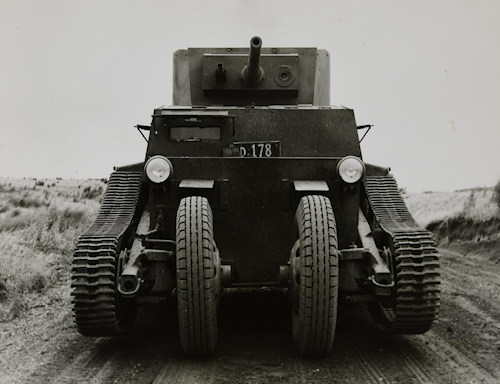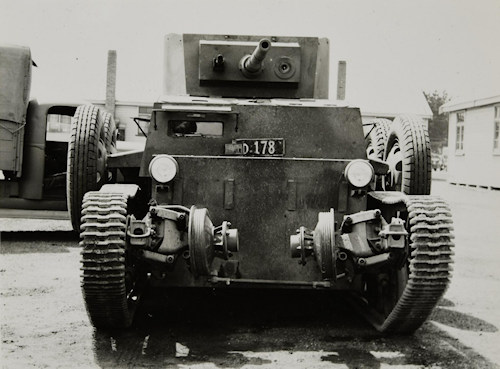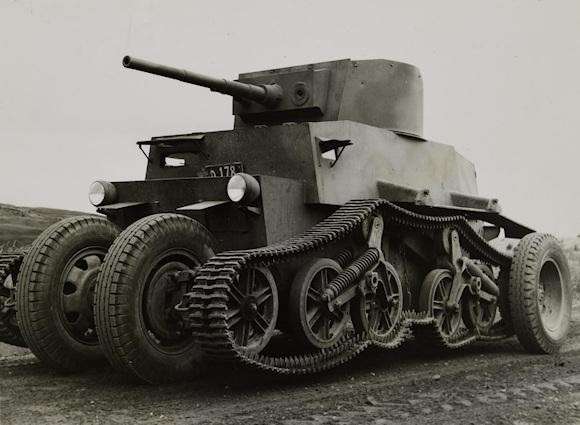Lo schofield was a New Zealand light tank - never used - during the Second World War.
Conceived and designed by Ernest James Schofield around 1940, the vehicle was studied and entirely built in New Zealand.
It should be noted that at that time the United Kingdom was unable to provide any kind of help to Wellington.
The vehicle could be considered completely handcrafted and suffered - despite the singularity of the double wheel-track solution - from a global lack of traditions and studies in the armored vehicles sector.
The tank was based on the chassis of a GMC 6cwt truck made by the local industry, as well as wheels and mechanical parts. Tracks and suspensions were taken from a Universal Carrier (light armored vehicle); the armor was supplied by the New Zealand Department of Railways.
A particularly important aspect of the wagon was its speed: it could exceed 70 km/h (on wheels).

The technicians, however, considered the vehicle of modest quality and mass production did not take place.
Subsequently, some modifications were attempted and the "improved" version was sent to the United Kingdom around 1943. The tank schofield was examined by Department of Tank Design (DTD) and, finally, it was decided to end the project. The medium – in fact – became a “valuable heirloom exclusively historical-collectible".1
It should be noted that in those years the New Zealand political-military authorities also developed other tanks, and among these there was the tank Bob Simple. The result was the same as the "colleague" schofield...
New Zealand – like other Commonwealth nations – arrived completely unprepared for World War II. However, it is mandatory to consider how its geographical location was such as to "clear" the excessive optimism of the various rulers. In fact, Wellington - theoretically - had nothing to worry about if a war broke out on the European continent (if only because of the risk of an invasion) but Japan's imperial ambitions would radically change perspective...
New Zealand's problem was exacerbated by the fact that a conflict had never touched its territory (military occupation by another nation), and all this resulted in an inevitable "carelessness" in the study and planning of armaments.2

Nonetheless, New Zealanders in World War II distinguished themselves.
Casualties during the conflict were 11,928, and postwar calculations showed that “the ratio of deaths to million population of New Zealand (at 6684) was the highest in the Commonwealth (with Gran Brittany at 5123 and Australia at 3232)".3
The light tank schofield it had a length of 3,99 m, a height of 2,1 m (on wheels) and a width of 2,6 m. She weighed 5,21 tons and had 6-10mm armor plating.
Engine: Chevrolet 6-cylinder petrol, power 29,5 HP. The maximum speed was 72 km/h on wheels, while 41/43 km/h on tracks.
Armament consisted of a 2-pounder (40 mm) cannon and a 7,92 mm Besa machine gun.
The vessel could count on a crew of 3 men.
1 PF Cazzani, The Schofield wagon, in Illustrated History n°202, 1974, p.53
2 See ibid
3https://nzhistory.govt.nz/war/new-zealand-and-the-second-world-war-overview
Photo: New Zealand Military Forces












